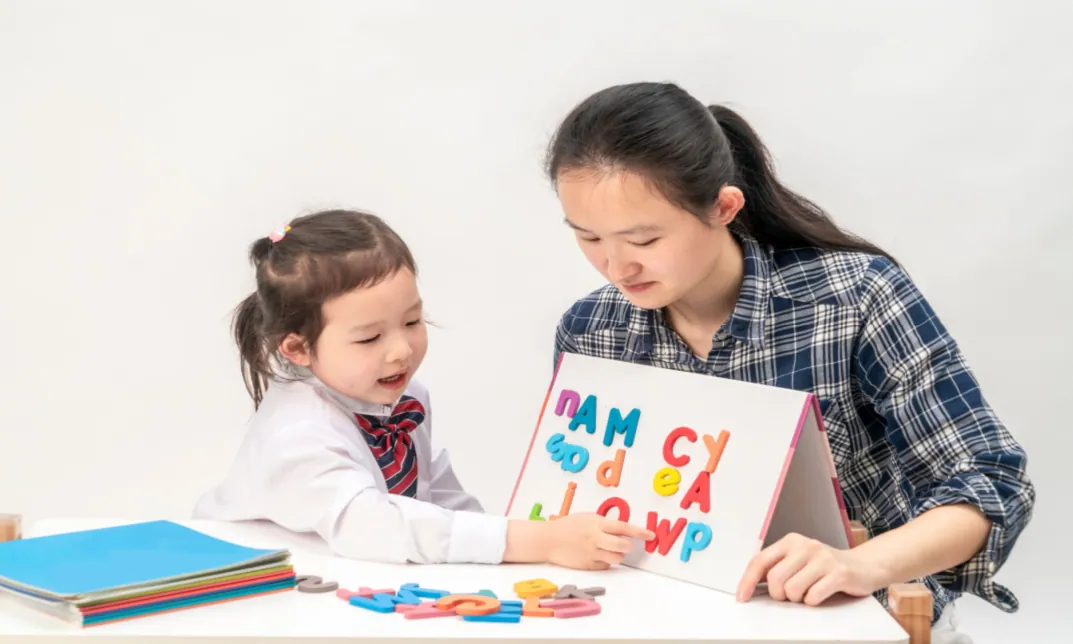Synthetic phonics helps improve reading skills by teaching how sounds and letters connect to form words. It’s organised and breaks down words into smaller parts for easier reading. This blog discusses synthetic phonics, its significance in reading, how it’s applied, and future developments.
Definition of Synthetic Phonics
The term “synthetic” refers to the process of blending individual sounds to form words. Instead of memorising whole words, synthetic phonics focuses on teaching children the fundamental building blocks of language. Moreover, two types of building blocks exist in language: phonemes and graphemes.
Why is it Called Synthetic Phonics?

Synthetic phonics is named for its method of blending individual sounds to form words. Children learn to link sounds with letters or groups of letters and blend these sounds to read words. It’s called “synthetic” because it involves creating something new by combining smaller parts, such as sounds, to make words. This is different from “analytic” phonics, where you look at whole words or parts of words to understand them.
Components of Synthetic Phonics?
The components of synthetic phonics work together to teach reading and spelling effectively. The components include:
- Phonemes: These are the individual sounds of spoken language, such as /b/, /a/, /t/ in the word “bat”.
- Graphemes: Graphemes are the written representations of phonemes, which can be single letters or combinations of letters, like ‘b’, ‘a’, ‘t’ in the word “bat”.
- Blending: This involves combining individual phonemes together to read a word. For example, blending /b/, /a/, /t/ together to form the word “bat”.
- Segmenting: Segmenting is the reverse of blending. It involves breaking a word into its individual phonemes. For example, segmenting the word “bat” into /b/, /a/, /t/.
- Decoding: Decoding refers to the ability to use knowledge of phonemes and graphemes to read or pronounce words accurately.
- Encoding: Encoding is the counterpart to decoding. It involves using knowledge of phonemes and graphemes to spell words accurately.
Benefits of Synthetic Phonics
Synthetic phonics has greatly contributed to the lives of people with difficulty reading and writing correctly. Here’s how it can help people with learning difficulties:
- Strong Foundation: It provides a solid foundation for reading and writing by systematically teaching the relationship between sounds and letters. Thus, it helps children develop essential literacy skills from the outset.
- Improved Decoding and Spelling Ability: Children become more accurate readers and spellers by learning to blend individual sounds together. Moreover, they can decode unfamiliar words and spell words they haven’t seen before.
- Independence: Synthetic phonics qualifies children to become independent readers and writers. Once they grasp the phonetic principles, they can apply them to decode and spell words independently. As a result, they won’t be relying heavily on memorisation.
- Early Intervention: It is effective for early intervention with struggling readers. Moreover, identifying phonemic awareness and letter-sound correspondence early can prevent reading difficulties from escalating.
- Accessibility: it is accessible to all learners, including those with dyslexia or other learning difficulties. In fact, its structured approach provides clear guidance and support for learners of varying abilities.
- Increased Phonemic Awareness: Through activities such as blending and segmenting, synthetic phonics helps develop learners’ awareness of individual sounds in words. Moreover, it is significant for effective reading and spelling.
- Consistency: Its systematic and consistent approach ensures that all children receive the same foundational knowledge. Thus, it will make it easier for teachers to track progress and provide targeted support where needed.
Implementing Synthetic Phonics in Education
Bringing synthetic phonics into education means using a structured method to help students understand how sounds and letters work together. Teachers start with simple sounds and gradually move to more complex ones. Moreover, they use different activities to make learning fun and effective. Furthermore, they give students lots of chances to practise and support them along the way.
Teachers play a big role in making sure students learn well. They use different teaching methods, such as using things students can touch and see, and they track their activities to help them improve.
It’s important for schools to have the right tools and training for teachers. So that everyone can work together to help students learn with synthetic phonics
Challenges and Criticism of Synthetic Phonics
Even though synthetic phonics is a popular way to teach reading, it could be better. Here are some things to keep in mind:
- Not all words follow the rules: English is a tricky language! There are many words where the sounds don’t quite match how they’re spelt. Words like “through” or “cough” can be confusing for kids who are just learning phonics.
- Can be repetitive: Some children might find drilling letter sounds and blending them together a little boring. It’s important to mix things up with games, songs, and stories to keep them engaged.
- Doesn’t focus on meaning: Synthetic phonics is great for sounding out words, but it doesn’t necessarily teach kids what those words mean. It’s important to balance phonics with reading activities that help children understand the stories they’re reading.
- Might not work for all learners: Every child learns differently. Some kids might pick up phonics quickly, while others might need a different approach. Teachers need to be flexible and find what works best for each child.
Even with these challenges, synthetic phonics is a valuable tool for many young readers. It gives them a strong foundation in decoding words. Thus, it helps them become confident and independent readers.
Future Trends and Research in Synthetic Phonics
Even though synthetic phonics is a well-established way to teach reading, there’s always room for improvement! Here’s a look at some exciting things happening in the world of synthetic phonics:
Making it more engaging
Researchers are looking for ways to make phonics lessons more fun and interactive. Imagine games, songs, or even computer programs that help kids learn letter sounds in a playful way!
Adapting it to different needs
Not all kids learn the same way. Some might need extra help with certain sounds, while others might whiz through the basics. The future might involve personalised phonics programs that adjust to each child’s strengths and weaknesses.
Using technology
Technology is becoming a bigger part of education, and phonics is no exception. We might see more apps, websites, and even educational tablets designed to teach phonics in a clear and engaging way.
Understanding how it works effectively
Researchers are always trying to learn more about how children learn to read. This will help them create even better phonics programs that truly make a difference.
These are just a few ideas about what the future holds for synthetic phonics. As research continues, we can expect even more exciting developments that will help all children become successful readers!
Conclusion
Synthetic phonics helps students learn to read better by showing them how sounds match up with letters. Thus, this makes it easier for them to figure out words independently. Even though some people find it tricky, researchers are still working to improve it. So everyone has a chance to become a good reader. Synthetic phonics can make reading more accessible for those with reading disabilities. Therefore, it has a great impact on their lives as it helps them reach the next level of education.




